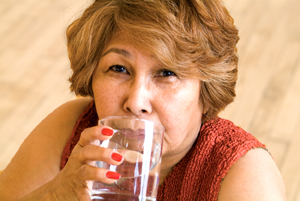High Blood Sugar (Hyperglycemia)
High Blood Sugar (Hyperglycemia)
Too much glucose (sugar) in your blood is called hyperglycemia or high blood sugar. High blood sugar can lead to a dangerous condition called ketoacidosis. In severe cases, it can lead to dehydration and coma.
Possible causes of hyperglycemia
Inadequate treatment plan for diabetes
Being sick
Being under stress
Taking certain medicines, such as steroids
Eating too much food, especially carbohydrates
Being less active than usual
Not taking enough diabetes medicine
Symptoms of hyperglycemia
Hyperglycemia may not cause symptoms. If you do have symptoms, they may include:
Thirst
Frequent need to urinate
Feeling tired
Nausea and vomiting
Itchy, dry skin
Blurry vision
Fast breathing and breath that smells fruity
Weakness
Dizziness
Wounds or skin infections that don’t heal
Unexplained weight loss if hyperglycemia lasts for more than a few days
What you should do
Make sure you do the following:
Check your blood sugar.
Drink plenty of sugar-free, caffeine-free liquids such as water. Don’t drink fruit juice.
Check your blood sugar again every 4 hours. If you take insulin or diabetes medicines, follow your sick-day plan for taking medicine. Call your healthcare provider if you are not able to eat.
Check your blood or urine for ketones as directed.
Call your healthcare provider if your blood sugar and ketones do not return to your target range.
Preventing high blood sugar
To help keep your blood sugar from getting too high:
Control stress.
When you're ill, follow your sick-day plan.
Follow your meal plan. Eat only the amount of food on your meal plan
Follow your exercise plan.
Take your insulin or diabetes medicines as directed by your healthcare team. Also test your blood sugar as directed. If the plan is not working for you, discuss it with your healthcare provider.
Other things to do
Carry a medical ID card, a compact USB drive, or wear a medical alert bracelet or necklace. It should say that you have diabetes. It should also say what to do in case you pass out or go into a coma.
Make sure family, friends, and coworkers know the signs of high blood sugar. Tell them what to do if your blood sugar gets very high and you can’t help yourself.
Talk to your healthcare team about other things you can do to prevent high blood sugar.
Special note: Drink plenty of sugar-free and caffeine-free liquids when you feel symptoms of hyperglycemia. Call your healthcare provider if you keep having episodes of hyperglycemia.
Updated:
October 09, 2017
Sources:
Clinical features and diagnosis of diabetic ketoacidosis and hyperosmolar hyperglycemic state in adults. UpToDate, Diabetic ketoacidosis and hyperosmolar hyperglycemic state in adults: Clinical features, evaluation, and diagnosis. UpToDate
Reviewed By:
Hurd, Robert, MD,Image reviewed by StayWell art team.,Sather, Rita, RN
